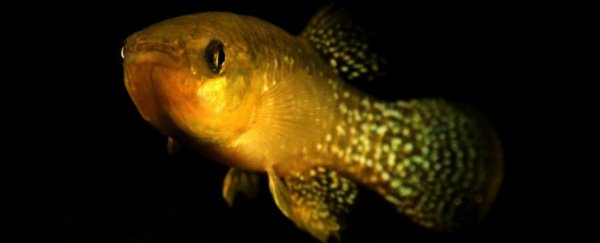Researchers have discovered that a fish living off the east coast of the US has evolved to be 8,000 times more resilient to toxic waste than normal fish.
The small striped 'mud minnow', or killifish, is known for living in heavily polluted estuaries such as New Jersey's Newark Bay and Virginia's Elizabeth River. And scientists have now shown that it survives thanks to an extreme mutation that lets them endure toxic waste.
The killifish is a favourite among aquarium owners for its small size and beautiful colours. It's also a favourite for ecologists as an indicator species, acting as an aquatic canary in polluted environments.
"You see killifish at these sites that are extremely tolerant of some very nasty chemical pollutants," environmental toxicologist Andrew Whitehead from the University of California, Davis, told National Geographic.
The mix of dioxins, polychlorinated biphenyl (PCB), and heavy metals in these sites were anywhere up to 8,000 times the level that would make most killifish go belly-up. Just like Blinky the three-eyed fish from the Simpsons, these fish were thriving in a toxic soup.
Unlike good old Blinky, there was nothing physically different about these populations. Their genes told a different story, however.
Whitehead and his team collected just under 400 Atlantic killifish from a number of heavily polluted sites along the US East Coast and sequenced their genomes. In a text-book case of convergent evolution, they discovered similar mutations had popped up independently in the same genes within each population.
Those mutations switched off molecular pathways which caused damage in cells affected by the toxins. What's more, they appeared to be unique to the killifish living in the polluted waters, given they're of little advantage in cleaner environments.
Watching marine life adapt to our otherwise lethal waste seems like a breath of fresh air, but it's not all good news.
"Unfortunately, most species we care about preserving probably can't adapt to these rapid changes because they don't have the high levels of genetic variation that allow them to evolve quickly," Whitehead explained.
The killifish's advantage is the diversity of its genes, allowing them to survive the random shuffle of mutations long enough until a winning combination appears.
Or as Whitehead told National Geographic, "It's really important when the environment changes abruptly to have the necessary cards in hand."
For highly-specialised species, bad mutations tend to have a greater impact on their survival.
Yet these mutations do come at a cost. In adapting to their toxic homes, each population has reduced in diversity and become more specialised themselves. Future changes to these otherwise lethal environments could spell doom for the hardy killifish.
While it's a clear win for the killifish, it might not be so pretty for its predators. The small fish is chow for bigger fish and birds – there's no telling what effect the concentration of heavy metals and PCBs will have on the rest of the food web. Including us apex predators right up the top.
The research has been published in Science.
